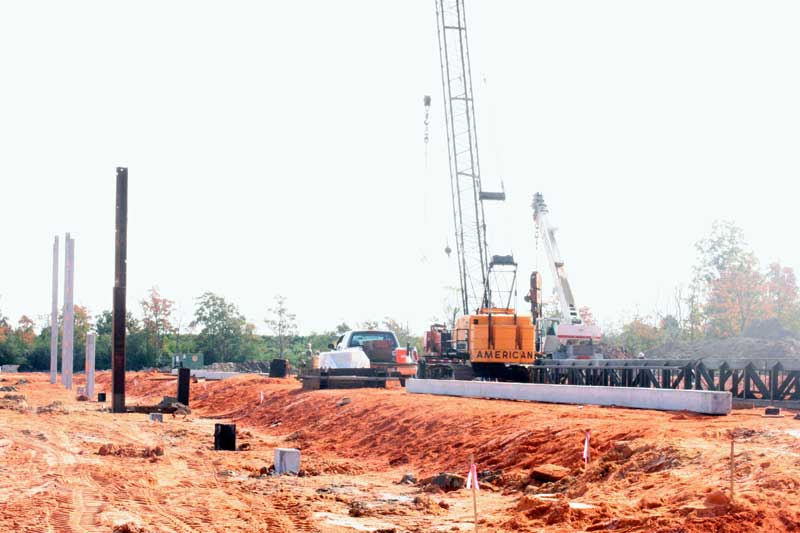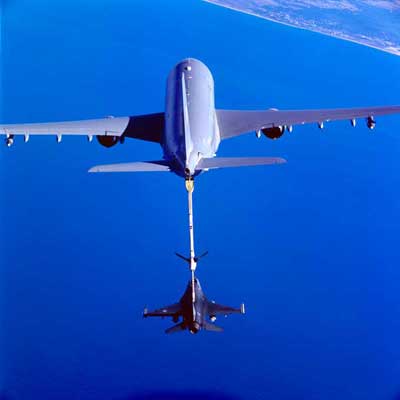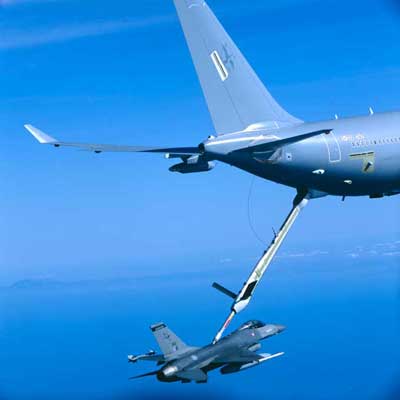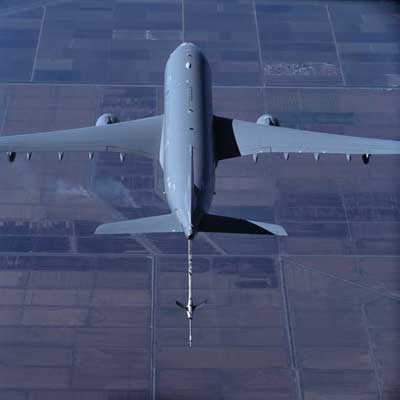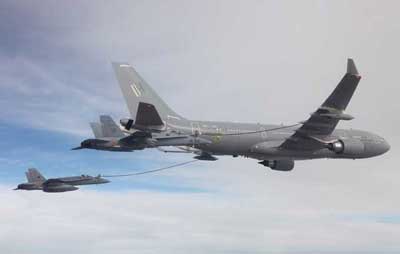Given the centrality of Alabama to two national competitions, i.e. the well-known tanker competition, but also the LCS one, George Talbot, political editor of the Mobile Press-Register and Robbin Laird (Sldinfo.com) sat down with Governor Riley of Alabama on November 17, 2009 to discuss the role of Alabama in aerospace and defense, the new Aerospace Alliance initiative, his visit to Spain to experience the operation of the boom for the new tanker, and his views on the future of aerospace and defense in the region.
Alabama is at the vortex of the two key defense programs up for selection by the Obama Administration. The tanker competition has received the most press, but Mobile is at the heart of the LCS competition as well. Both bids are based on collaboration with foreign firms, Airbus and EADS for the tanker, and Austal for the LCS. In the case of the tanker, collaborating with a foreign company seems akin to original sin, but working with Austal seems to pass without comment on the national scene.
Additionally, one would get the sense from the controversy surrounding the tanker that Alabama was an odd place to build defense systems. But in reality, Alabama provides significant support for the US military in terms of installations, industry and overall support. Indeed, in Huntsville, Boeing is a major industrial player in the US rocket business. In addition to defense capabilities, Alabama has major aviation and MRO or maintenance, repair and overhaul facilities.
Alabama is at the vortex of the two key defense programs up for selection by the Obama Administration.
According to an Alabama presentation, Aviation companies targeted for both the commercial and defense sectors are located throughout the state, with concentrations in central and southeast Alabama. Area companies include GKN Aerospace, with facilities in Montgomery and Tallassee, and Kelly Aerospace in Montgomery. In the south Alabama cities of Abbeville and Mobile, Teledyne Continental Motors employs more than 450 workers in the manufacture of engines, components and ignition systems for general aviation.
The MRO industry is spread across the state. Pemco World Air Services facility in Dothan provides maintenance services for numerous rotary wing aircraft as well as heavy maintenance and major modifications on wide-body and narrow-body aircraft. Alabama Aircraft Industries in Birmingham provides a full range of aviation maintenance and modification services for both U.S. and foreign military, with a specialization in cargo planes. In Mobile, ST Mobile Aerospace Engineering focuses on providing scheduled maintenance and major modifications to wide-body and narrow-body aircraft. In Pike County, Sikorsky Support Services has helicopter service operations.
In addition, U.S. Helicopter operates a large helicopter service facility in Dale County to serve Fort Rucker. AcroHelipro operates a helicopter repair and overhaul facility in Andalusia. In 2006, Aerospace Integration Corporation announced that the company would open a new modification facility in Albertville, Alabama integrating enhanced technology into military helicopters.
“Going deep into history“

For the Governor of Alabama, the aerospace and defense role of the state goes deep into history. As such, Governor Riley underscores that he has been a bit surprised by the pushback from the tanker competition, which suggested to some that Alabama is a Johnny-come lately in the aerospace and defense business. He points out that the Wright brothers opened the nation’s first civilian flying school on an old cotton plantation on the outskirts of Montgomery, Alabama in the early 20th century.
For example, the Army aviation community at Fort Rucker operates with a “state of the art training facility”. “We are doing a significant amount of aviation repair work.” And to support such work “we have built an aviation education capability second to none. We can graduate up to 1,000-licensed AP certified mechanics per year…. Are we going to have the capacity to support the growth of aviation jobs? We have indeed invested in the training facilities and are able to do so.”
“When some questioned whether we could build a tanker in Alabama, it was almost humorous to the people of Alabama….“, he pursues. “In the 50s and 60s, the rockets that went to the moon were built in Alabama. The NASA component is growing. We have Army Material command moving out of Northern Virginia to Huntsville Alabama. Maxwell AFB is a remarkable facility…. One of the largest Army depots is in Fort McClellan. Up there we are rebuilding the tanks and wheeled vehicles coming back from the war.”
The Governor underscores that “we have invested in the capability to train the personnel needed by the Army, Navy or Air Force for any mission that might be asked of us (…) The Austal shipyard is another amazing facility. And if things turn out the way I hope they do, 15% of all new naval ships will be built in Mobile Alabama… This is a state of the art shipyard, which can build modular aluminum, ships efficiently and effectively.”
“Not just talking a good game” : the automobile industry analogy
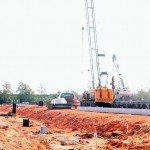
With some passion the Governor notes that “We feel that we not only talk a good game, but we have stepped up and delivered on every obligation that we have been asked to do for the military.” (See video 1: Walking the Walk)
Discussing the new Aerospace Alliance initiative, he then adds: “You can look back over the last 10-12 years with regard to the automobile industry in the South and you are about to see the same thing with regard to aviation and aerospace. 10-12 years ago, Alabama did not produce an automobile. Today, we have the capacity to do 850,000 cars per year…. But this has also happened across the South…. It has created a critical mass for the automobile sector. Tier 1, Tier 2, Tier 3 suppliers are coming into this area… We want to do the same thing in the Southeast for aviation and aerospace. (…) If you combine Louisiana’s NASA activities, with Mississippi’s activities, with what we are doing and with Boeing’s move to South Carolina to build the Dreamliner, you see the same thing in aerospace that you saw in the automobile industry.”
“We learned a long time ago that when it comes to economic development, the best thing we could do is erase state lines. Whatever happens in Mississippi has a huge impact on Alabama. What happens in Georgia will have a huge impact on Alabama. So today we are trying to create region that we are going to have state of the art facilities, capabilities, work force development and procedures, to allow our people to take advantage of these new opportunities.” (See video 2: Erasing State Lines)
Experiencing EADS tanker’s new refueling boom
On a human-interest side, the Governor also described his experience of going to Spain on the way back from Germany and flying on an EADS tanker. The Governor flew for an hour on an Airbus 310 tanker while deploying the new refueling booms designed to transfer fuel from the tanker to another aircraft. Although he did not refuel an aircraft, he did operate the boom while in flight. The Governor said, “it was fun to operate…. It is extraordinarily easy to use… My host said that it was easy to use because we spent $175 million to develop it over five years…. It was easier to use on the plane than on the simulator.” He then added with some passion: “I hear some people say that the boom does not exist, but I would be hard pressed to be convinced of that because I saw it, was on the plane with it and flew it…” For the Governor, the advantages of the boom being operated from the cockpit seem obvious, as opposed to operating the boom from the back: “I think our forces deserve this capability, and I find it difficult to understand why we would not want the most advanced boom.” (See video 3: Using the new Boom on the Airbus Tanker)
———-
***Posted November 26th, 2009
Notes regarding the slideshow:
The first photo showed the building of a new maritime center in Mobile which became part of the LCS program support.
The photos of the A330 MRTT used for the exercise is the first for the Royal Australian Air Force (RAAF), which is due to be handed over to the customer by mid-2010 and is configured with two hose-and-drogue pods and a centerline-mounted refueling boom. Both systems have completed wet contacts in flight.
In the trial the aircraft took off from Airbus Military’s Getafe facility near Madrid and rendezvous used with two F/A-18A+ aircraft which had flown from the Spanish Air Force base at Torejon. During a two-hour sortie the two fighters received 11,400kg of fuel in a sequence of 13 contacts of which 11 were simultaneous. The operation was conducted at an altitude of around 15,000ft and a speed of 250kt and used only the hose-and-drogue pods.


